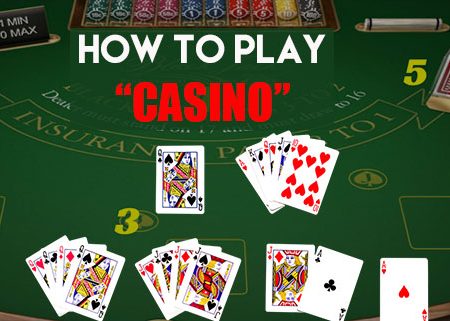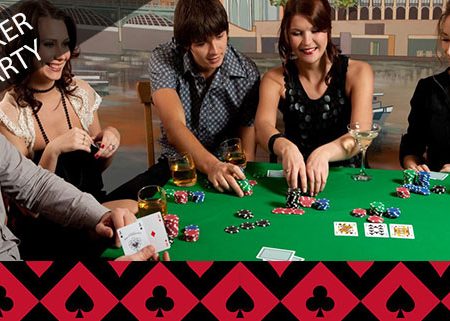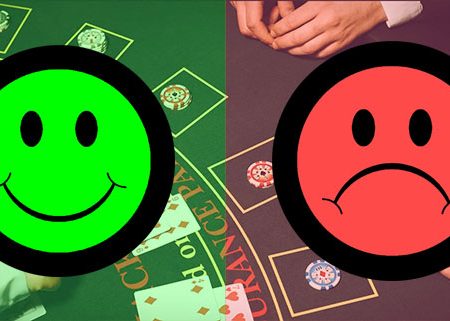Tribal gaming was established in the 1970s when some Native American tribes began using bingo to make money for their reservations. The Indian Gaming Regulatory Act (IGRA), which was passed in 1988, gave federally recognized tribes the right to negotiate for casino gambling.
Since then, Native American gambling has expanded across the US. Most states have at least one tribal gambling institution.
Over the last few decades, Native American gaming has performed well. However, there are some myths about tribal gambling.
These myths revolve around the belief that tribal casinos have more freedom than commercial casinos. Many people believe that Native American venues have worse odds than commercial ones.
Continue reading to learn seven myths about Native American gambling.
Myth #1: Native American casinos don’t answer to anyone
Tribal casinos are most often misunderstood because they make their own rules and don’t follow federal or state guidelines.
This myth stems from the belief that Indian tribes live on sovereign lands. While their sovereignty provides certain freedoms, tribes are not allowed to do what they like with casino gambling.
Since the 1800s, the US federal government considered Native American governments to have control over their members or lands. However, tribal lands are considered dependent nations and therefore subject to the same laws as Congress.
Tribes are federal lands and must negotiate gambling agreements with their state governments. The US Department of the Interior will approve the agreement once both sides have agreed on gambling standards.
The rules are enforced by the tribal gaming commission, which is a joint body of all parties. Native American casinos must adhere to the same standards as commercial establishments.
Tribal casinos can’t alter the payout percentages of slots or make confusing rules for table games. Instead, they adhere to a reasonable agreement between the tribal gambling commission, the local state government, and the Department of the Interior.
Myth #2: Tribal casinos don’t pay back as much as commercial casinos
Many jurisdictions impose a requirement that commercial casinos release information about the return to player (RTP) for slot machines.
This information is often found in reports of state gaming commissions and is sorted by coin denomination. This example uses figures from the 2017 Nevada Gaming Control Board Report.
– Penny Slots = 90.17% payback
– Nickel Slots = 94.54% payback
– Quarter Slots = 93.06% payback
– Dollar Slots = 93.94% payback
– $5 Slots = 94.16% payback
– $25 Slots = 95.03% payback
– $100 Slots = 93.21% payback
Commercial gambling venues must also offer a minimum percentage of slots payouts. New Jersey casinos must offer at least 83% payback, while Nevada casinos must provide a minimum 75% RTP.
Publication of RTP and minimum payout percentages are intended to make sure that players don’t get ripped off by casinos. Gamblers will also feel more at ease knowing that there are strict payback standards.
However, not all Native American casinos must make their RTP public. In some cases, they may not have to comply with state minimum RTP standards.
Tribes don’t want to reduce the RTP of slot machines to 70% to try to sabotage players’ bankrolls. They offer high payout percentages to keep players coming back.
Tribal casinos must have a decent RTP to discourage players. These casinos typically offer payback rates of anywhere from 90% to 95% depending on the coin denomination.
These are the RTP figures for Connecticut’s Foxwoods Casino, which is owned and operated by the Mashantucket Pequot Tribe.
– Penny Slots = 89.88% payback
– Nickel Slots = 90.58% payback
– Quarter Slots = 91.95% payback
– Dollar Slots = 93.45% payback
– $5 Slots = 94.08% payback
– $25 Slots = 96.16% payback
– $100 Slots = 96.76% payback
This RTP is comparable to what you’d see in Nevada casinos. However, the main point is that Native American casinos have solid payout percentages, which encourages more play and return visits.
Also Read: What to Expect During Your First Casino Visit
Myth #3: Any Indian Tribe can start a casino
Another myth about Native American gaming is that anyone can open a casino if they have enough money and motivation. However, in order for a tribe of Indians to open a casino, certain conditions must be met.
They must first be legally recognized by the US government. Federal recognition of less than 560 tribes is not possible, leaving out many Indian groups.
Second, Native Americans must own the reservation that supports their casino. The number of potential casino owners is further reduced by the fact that only 200 tribes own their reservation.
The IGRA is the legal framework that governs Indian gambling.
In 1988, the IGRA was established to resolve disputes between state governments and tribal gaming interests. This legislation was instrumental in resolving disputes, such as the 1987 case between California and the Cabazon Band of Mission Indians.
To generate income, the Cabazon Band opened a bingo and card room on their reservation in southern California. The parlor was shut down by politicians from the Golden State, who believed it was illegal.
The Supreme Court heard the case and ruled in favor of the Mission Indians, who made their gambling legal. California also allows certain types, so the Supreme Court ruled that the state cannot prevent sovereign reservations from engaging in gambling.Gaming.
The California case of Cabazon Band of Mission Indians allowed more tribes to open gambling venues across the US. The matter was quickly ignored by the states, who lobbied Congress to tax reservation casinos and allow commercial casinos.
The IGRA was passed, which is a compromise of states and tribes. The IGRA allows for good faith negotiations between tribal governments and state governments regarding legal gambling.
A state can deny casino gaming to local tribes if they don’t allow it. A state cannot allow commercial casinos while refusing to negotiate a tribe gambling pact.
States like Utah have legalized all forms of gambling, but tribes there are not allowed to open casinos. They will have to wait until the state government allows casino gambling, if ever.
Myth #4: Tribes are getting rich from their casinos
Casinos are not a quick way to make a fortune. Native American gambling venues don’t always succeed as people believe.
Due to low revenues, some tribes were forced to close down their casinos. This is especially true for reservations located in remote areas.
The poor performance of the Santa Ysabel Tribe casino led to their closure in 2014. Santa Ysabel is approximately 40 miles away from San Diego, in the California desert.
Indian casinos must be just like commercial casinos. Where is the myth that tribal casinos can be a gravy train?
Mainstream news stories that are based on Native American gambling operations are the biggest culprit. The best example of a successful tribal gaming operation that has gained mainstream attention is Minnesota’s Shakopee Mdewakanton Tribe.
The Shakopee Mdewakanton has just 460 members. They own two casinos, Little Six Casino and Mystic Lake, which together generate more than $1 billion each year.
Because Shakopee members receive an annual payment of over $1 million, they don’t even need to work. The Shakopee Mdewakanton have given $250 million to other tribes over the years, owing to their wealth.
These stories make it easy to believe that Native Americans are making a lot of money from gambling. The truth is, the average Indian doesn’t receive a $1,000,000 annual payout from the casino on their reservation.
Despite their casinos, many reservations have high poverty rates and low unemployment. Oregon’s Siletz tribe, for example, has seen its poverty rate rise from 21% to almost 40% over the past few years.
This is partly because Native Americans are less motivated when they share casino revenue. Tribes are not able to enjoy a thriving lifestyle because most revenue sharing isn’t.
Myth #5 – Native American Casinos beat Advantage Players
Las Vegas was once run by mobsters who occasionally beat up advantage gamblers such as card counters or hole carders.
The 1980s saw Vegas become more commercialized and the mob was forced out. This has made Sin City safer for advantage gamblers.
While Vegas is considered safer for counting cards, reservations on Native American Indians are not. Tribal casinos have a terrible reputation due to the fact that they are not subject to the same laws and regulations as commercial casinos.
It is also possible to be beaten in tribal gaming venues for counting cards if you haven’t committed an isolated incident. The Las Vegas Sun reported that Arizona gamblers were mistreated at the Mazatzal casino (Tonto Apache Tribe).
Rahne Pistor, a plaintiff in this case, testified that tribal officials failed to identify themselves during a search and then stole his money.
Pistor said that he simply won more money than they wanted. “They took me and handcuffed me, forced me to a backroom in the casino, and physically stole all of my money.”
This case was won by the plaintiffs. A federal judge stated that “sovereign immunity” did not apply since tribal officials were named in their respective capacities.
These stories can be found on the internet through second- and third-hand accounts. You’ll also find horror stories about commercial venues.
Firestarter wrote, “For what it is worth, I was just caught at one this year.” “I was not warned or backed off. Recovered all belongings and backroomed.”
“I asked him what he would do if he ran away, and he said something about being uncooperative. But I didn’t get any impression that he would have tackled or drawn his weapon.”
George Henningsen is the chairman of Pequot Gaming Commission. He believes that preconceived notions about tribal casinos treating pro-gamblers roughly are untrue. Henningsen stated to the Las Vegas Sun that only the most extreme cases can share their stories.
Native American casinos are just as reputable as commercial establishments. It doesn’t bode well for their image when players are maltreated.
Myth #6 – Tribal Casinos Offer Only Bingo and Poker
Most state-tribal gaming agreements only permit Native American casinos to offer Class 2 gaming. This includes bingo, pull-tabs and punchboards as well as non-house banked cards games such as poker.
A tribal casino may only offer poker, bingo, pull-tabs, and poker to gamblers. They might dismiss the possibility of being able to play slot machines. Tribal gaming establishments can suffer from this negative reputation, as slots are one of the most popular American casino games.
Many tribes have discovered a loophole in Class II that allows them the ability to offer slot machines. These slots must be able to give results the same way as a bingo game.
Every slot machine comes with a program that looks like a bingo card. It has numbers and numbers. The central server will call numbers and give prizes to machines that form winning lines.
Here’s an example of how Class II slot machines distribute prizes.
– 500 payouts per cycle
– 1 jackpot.
– 10 payouts equal to 1,000 coins- 50 coins worth of payouts
– 70 payouts for 10 coins
– 369 payouts equal to 1 coin
The major difference between a Class II slot machine and a Class III one is the fact that they offer a fixed number of prizes. Like a bingo game, the pool of prizes won’t reset after the game ends.
Class III slots use a random number generator to determine when each prize will pay. You could theoretically win the jackpot with back-to-back spins.
It’s difficult to tell the difference between a Class II slot machine and a Class III one in terms of their appearance. Both offer reels, graphics, and sound effects.
Some states allow Native American casinos to offer Class II and III gaming. Oklahoma is an example of such a state, as it allows Native American casinos to offer both Class II and III gaming.
Myth #7: Native American Casinos Don’t Pay Taxes
Another misconception about tribal gaming establishments is that they don’t have to pay taxes. This is a complicated issue, however.
American Indians are required to pay federal income taxes and capital gains tax. They are exempted from tax on any revenue earned on reservations.
First, Indian gaming compacts may require tribes to share their casino revenue with the state they reside in. Native American gaming venues contribute in many other ways, even if they don’t share the revenue.
The greatest benefit of tribal casinos is the ability to employ hundreds, or even thousands, of locals. Any employee who lives on land other than a reservation is subject to federal and state taxes.
Other Native Americans can also benefit from charitable donations by successful tribes, as was the case with Shakopee Mdewakanton.
While not all Native American casinos pay tax, there are other benefits such as employment and charitable donations to other tribes.
Conclusion
Tribal casinos are an integral part of the American gambling scene. These gaming venues have had great success, helping to lift associated tribes from extreme poverty.
However, there have been detractors and misconceptions along with the success. These myths can have a negative impact on Native American casinos.
The tribal gaming commission oversees the casino(s) on the reservation to ensure they adhere to the terms of the pact. The pact stipulates that Native Americans cannot alter RTP at will, rip off gamblers, or rough up advantage players.
Another common myth revolves around financial issues, such as tribes making a lot of money from their casinos without paying taxes. These misconceptions give the impression that tribes are greedy, refusing to share their wealth.
However, this is not true as not all Native American casinos make huge fortunes. Because of their remote location and/or the competition from commercial casinos, some struggle to stay afloat.
Some tribal gaming agreements require that casinos share their revenue with the states in order to pay taxes. Even tribes that do not share revenue can help in other ways such as employment, charitable contributions, and drawing tourists.
When you consider everything, Native American casinos don’t seem to be very different from commercial venues. People see tribal casinos in a different light because of the myths they have.
How do Native American casinos operate within the boundaries of federal laws?
In recent years, a growing number of Native American casinos have popped up all over the United States offering unique gambling, entertainment, and dining experiences. But while these establishments are becoming increasingly popular, there are still many myths about Native American casinos. Here are the top 7 myths about Native American casinos debunked.
Myth 1: Native American Casinos are Illegal – This myth has been around since the inception of Native American casinos. It is actually a complete fallacy; Native American casinos actually operate within the boundaries of strict federal laws that have been in place since 1988. These laws regulate and control all aspects of casino operations and ensure they are safe and fair for customers.
Myth 2: Native American Casinos Provide Tax Breaks – This is another common myth about Native American casinos. It is true that some of the profits made by Native American casinos are not taxed, however, these establishments still pay taxes on any profits that are generated from operations. In addition, they must comply with all applicable state and local taxes.
Myth 3: Native American Casinos Have Loose Slot Machines – This is a myth that many people believe and is often perpetuated by misconceptions about Native American casinos. In reality, Native American casinos operate within the same gaming regulations as other casinos. Slot machines are regulated to ensure fairness, and the outcomes are predetermined by a Random Number Generator.
Myth 4: Native American Casinos Are Unsafe – This is most certainly not true; in fact, Native American casinos are some of the safest casinos in the United States due to stringent safety regulations and protocols. They also have a strong policy on underage gambling and rigorous security measures in place to ensure the safety of patrons and employees.
Myth 5: Employees at Native American Casinos Don’t Receive Benefits – This is untrue and in many cases Native American casinos provide their employees with comprehensive benefits, including health and dental care, paid vacations, and more.
Myth 6: Native American Casinos Are Not Fully Licensed and Insured – Native American casinos must adhere to all of the same licensing and insurance requirements as any other casino. This includes being licensed through the government and carrying appropriate liability insurance.
Myth 7: Employees at Native American Casinos Aren’t Trained – This is another common misconception about Native American casinos. In reality, all of the employees at these establishments are held to the same high standards as other casino employees. All staff are properly trained in all gaming and customer service protocols to ensure the best experience for all patrons.
The reality is that Native American casinos provide safe, fair, and regulated gambling experiences for patrons, and are a great entertainment option for those who enjoy wagering. So the next time you are looking for a gaming experience, don’t let myths stop you from visiting a Native American casino – you won’t be disappointed.









